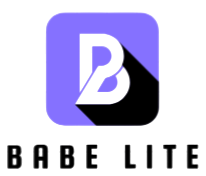Magazines as Educational Tools – Enhancing Classroom Learning
Magazines, often perceived as mere sources of entertainment or current events, hold significant potential as educational tools that can greatly enhance classroom learning. Their value lies in their ability to present information in engaging, accessible formats, and to cover a wide array of subjects that can be tailored to various educational needs. The visual appeal and diversity of content found in magazines can capture students’ attention and stimulate interest in topics that might otherwise seem dry or intimidating. For instance, science magazines often feature vibrant images and infographics that make complex concepts more understandable and relatable. By incorporating these materials into the curriculum, educators can leverage the inherent appeal of magazines to spark curiosity and promote active learning. Magazines also provide a rich resource for developing critical thinking skills. They often present different viewpoints on current issues, allowing students to analyze and evaluate information from multiple perspectives. This can be particularly valuable in subjects like social studies or current events, where understanding diverse opinions is crucial.

Teachers can use magazine articles as a basis for discussions, debates, and assignments, encouraging students to consider various angles and develop their own informed opinions. Additionally, the periodic nature of Magazine’s for world ensures that students are exposed to up-to-date information, helping them stay informed about recent developments and trends in various fields. Moreover, magazines offer opportunities for improving literacy and writing skills. The variety of writing styles, from feature articles to opinion pieces, exposes students to different ways of presenting information and arguments. Analyzing these styles can help students refine their own writing and develop a better understanding of effective communication. Teachers can also use magazines to create writing assignments that mimic the formats found in these publications, such as creating a mock magazine article or editorial. This not only enhances writing skills but also helps students appreciate the craft of professional journalism.
The interactive nature of many modern magazines, which often include digital components like quizzes, videos, and interactive graphics, further extends their educational potential. These elements can be used to create dynamic and multimedia-rich learning experiences. For example, a magazine’s online edition might offer interactive simulations or virtual tours that complement classroom instruction, providing students with hands-on learning opportunities that reinforce and expand on what they have studied. This relevance can enhance motivation and make learning more meaningful, as students recognize the direct link between their studies and the world beyond the classroom. Overall, magazines can be a powerful tool in education, offering a blend of visual engagement, critical thinking, literacy development, and real-world relevance. When used thoughtfully, they can transform classroom learning into a more dynamic and interactive experience, helping students to not only acquire knowledge but also to apply it in meaningful ways.
